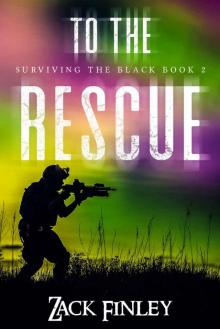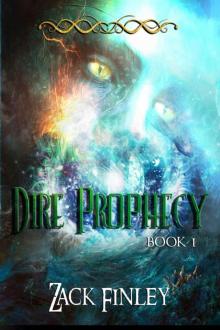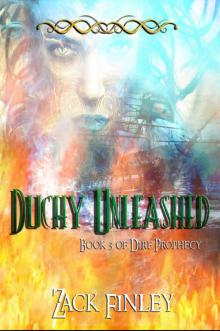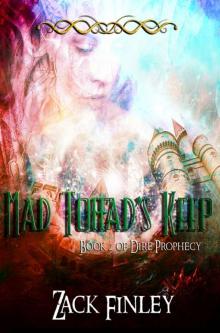- Home
- Zack Finley
Breckinridge Valley: Surviving the Black--Book 1 of a Post-Apocalyptical series Page 2
Breckinridge Valley: Surviving the Black--Book 1 of a Post-Apocalyptical series Read online
Page 2
“You can count on me to review and update The Plan. I certainly haven’t done much to help with that my whole life. I’m okay being your security force commander, but I don’t think I’m a good choice for your XO,” I said. “You need an XO who believes this survivalist stuff is real. The way you and mom do. The way Pops did. I’ve always done my part but believing society is on the verge of collapse is not something I feel in my gut. I do not believe we are on the brink of nuclear annihilation. Future terrorist attacks will kill people, but even dirty bombs and anthrax will not crater our society.”
“Fair enough,” dad said. “Let’s get you up to speed and get The Plan updated. I want you for my XO, but we can deal with that later.”
I knew the juggernaut that was my dad. He was never one to drop an idea just because someone didn’t agree with him. But I could be stubborn, too. I hoped I wouldn’t have to leave the valley because of it.
◆◆◆
Chapter 2
At first, The Plan was a disappointment. I followed my dad into his closet and down the ladder into the special cellar. The first thing that struck me was how small the cellar was, compared to my memory. Until I remembered I was a teenager the last time I was down here. My parents had a large, regular basement. But all the top-secret stuff lived in this one. Not that anyone ever said, it was just implied.
I remember how proud I was when I got old enough to come down here to pick up or drop off things.
My dad slid a cabinet out of the way to reveal a metal door with a serious lock.
“This is The Plan room,” he said, grinning. “I considered a safe door but didn’t want anyone knowing I needed a safe that big. Your mom and Roger have keys. I’ll give you one. You should think about someplace to store a spare key as part of your update. The room is fire resistant, so even if my house blows up or burns down, you should be able to get through, eventually. Probably overkill, but it seemed prudent 40 years ago.”
I don’t know what I was expecting but seeing a black binder on a table with a couple of chairs wasn’t it. File cabinets lined three walls from floor to ceiling.
“All our deeds, key correspondence, tax returns, conservancies and all the rest of the legal stuff pertaining to Breckenridge valley is in these file cabinets,” my dad said pointing to the right side of the room. “I started off with only a few files, but red tape has a life of its own. This was one of my main projects since Pops died. He hid everything. I think it was the bootlegger in him. I don’t know that I have everything we own here, but it’s pretty damn close.”
“Help me move the table over,” my dad said.
I wanted to ask why but knew he’d make me wait anyway so why give him the satisfaction.
He rolled up the rubber mat and pulled open a recessed hatch in the floor. It was very dark inside. Dad flicked on his key chain flashlight to show off the contents.
“I assume those are gold bars?” I asked, trying to count them but giving up when I got over 20.
“Yup, Pops made me liquidate all of his investments before he died and buy gold. It's actually appreciated in value, not as good as my portfolio but a solid diversification.” He closed the trap door and rolled the mat back. “Those suckers are heavy, and while they are legal, I can’t say as much about the funds Pops used to buy them. You certainly won’t find them on any IRS form. I figure if we have to use them, there won’t be an IRS.” We put the table back into place, but dad was still not ready for me to look at The Plan.
“Your mom and I want to spend less time managing our investments. We’ve been buying up a lot of land nearby and setting them up as nature conservancies, hunting clubs or tree farms. They’ve been good tax shelters and keep people from intruding into our sphere of influence.” He finally opened The Plan and pulled out a folded color-coded map of the area. It was a USGS topographic map centered on Breckenridge valley. “We own or control everything in yellow,” my dad said, with a lot of pride in his voice.
He was right to be proud, I knew we owned the valley but didn’t realize we also owned nearly everything for miles in every direction. “A lot of this is owned through shadow companies, to keep the Breckenridge name off the tax rolls. We own both sides of the Mecklin River through here,” he said pointing. “I got a great deal from a lumber company for much of it. Now I’m more in a passive acquisition stage. If a farm or large block of property comes up for sale, I buy it. In the early days, I did a bit of arm twisting. But we now have a good cushion, so everything is through shells.”
“That’s just our land holdings, we own the solar company in Huntsville. It doesn’t make much money, but we’ve got a lot of buildings in the county powered by solar. Short of a major EMP event, they should continue making electricity. We donated several systems to key county agencies. We got a nice tax write off, and I hope it will help our neighbors. Mecklin County Hospital in Oneida has one of our largest units, including full battery backup. Between that and their diesel generator, they should be able to avoid unnecessary loss of life during an extended grid shutdown. We put in full solar for the Mecklin County Sheriff’s operation center and the Hidden Forest retirement home. We discussed that a lot. Roger’s worried we just put a bullseye on Hidden Forest by giving it solar. I figure if the grid comes back after a few weeks, then it will really help them. If it doesn’t, then nothing we do will help much.”
I nodded in agreement. In any survivalist scenario, the elderly were at immediate risk. Those on oxygen, needing medication or nursing care would die within days or weeks.
“We’ve done what we can to get as much rooftop solar for homes, farms, and businesses throughout Mecklin County. Our standard installation includes a stash of spare components and fuses in a grounded box. We don’t sell any system that won’t power at least a single outlet in a grid failure. After the EMP passes many of our neighbors will have some electricity at least during the day. That should allow most to at least save the food in their freezers and refrigerators. Most of the units we sold don’t have the battery banks they need to have power at night, but it is better than going totally dark. Having our neighbors in reasonable shape, compared to the rest of the country is a good thing. It hasn’t hurt their pocketbooks either. The Tennessee Power Co-op provides good reimbursement for rooftop solar,” said dad. “We’ve offered good deals to Mecklin County farms and businesses to add battery backup. They’ve been really grateful for that, especially after last year’s ice storms.”
“We have a lot of solar equipment stored in this valley, but one of the first things on The Plan’s checklist involves pulling our inventory out of the factory and bringing it into the valley,” he smiled and added, “We carry a lot more inventory than our accountant thinks we need.”
“Why don’t I look through The Plan and then we can discuss where you think I can help?” I asked.
“You are probably right, I just don’t get much of a chance to brag about anything, especially with someone who gets it. I really miss my talks with Pops. He’d be very impressed with how much territory we control now,” dad said. “Its good to have you home, son.”
My dad left me in The Plan room. Before sitting down to finally read the mythic document, I studied the valley map. When I left home, grandpa was still trying to buy the last parcel in the valley. Old man Smith died, and Mrs. Smith moved away to live with her daughter near Nashville. Junior Smith refused to deal for years until he eventually gave in. I failed to consider who or what owned the property that surrounded our valley. My grandpa and dad took care of that before it even dawned on me that anything could have changed our valley for the worst.
I folded the map carefully and opened the three-ring binder.
I spotted three separate handwriting types immediately. The crabby barely legible hand of my grandpa, the precise lettering of my mom, and the hasty scrawl of my dad.
The first tab was titled “Risks.”
I could hear my grandpa’s voice as I read his entries, “civil war,” “busted technology.�
��
My dad’s first entry was “nuclear war,” followed by “nuclear winter.”
My mom’s entries were “civil war,” “epidemic,” then most recently “EMP or CME.”
The last entries were in my dad’s handwriting “asteroid strike,” “terrorist attack,” and “invasion.”
While I was well aware of the potential impacts of EMP, I wasn’t familiar with CME. I needed to ask my mom about that.
EMP and invasion might go hand-in-hand, although I sometimes suspected the Chinese might hit us with a massive EMP just to get rid of the economic competition. If we were erased from the world stage, they could assume their “rightful place” in Asia. Sneaking a dozen EMP missiles to the North Koreans would allow the Chinese to maintain deniability. Not that we would care. We’d be too busy trying to survive. EMP warfare would hurt America and Europe a lot more than it would China or Russia. We had more to lose.
The next tab was on personnel. It appeared to be a running list of those my family considered allies in support of the valley. Some names were crossed off, like my grandpa and several other of his cronies that I knew had died. By each name were boxes labeled: “active,” or “inactive”; then “Valley” or “off-site.” I found my name and I was listed as inactive and off-site. Irene’s name was still active. Even Melissa and Jennifer were listed. I recognized all the names in the first few pages, but that changed as I delved deeper.
There was a card for every active member with date of birth, skills, and location tucked into pocket folders in the notebook. I found my inactive card toward the back of this section. My card listed my skills as farm hand, cattle hand, hunter, farm machinery, marksman, horseman, first aid, engineering, lumberman, solar tech, military tactics, leadership, and heavy weapons. Someone must have updated my skills as they learned of them. I recognized solar tech as one of the assignments I spent an entire leave period working on. I wasn’t sure what my dad considered heavy weapons.
I couldn’t stop myself from looking at Irene’s card. The small passport sized photo was from our wedding. Seeing it nearly made me lose it. The card summarized her life skills: teacher, business skills, advanced first aid, canner, baker, cook, gardener, horsemanship, farm machinery, and marksman. I personally trained her in self-defense, with and without weapons. She must have practiced while I was away to reach marksman. She was listed as part of the valley security force. The farm machinery qualification also took me by surprise, though I’m not sure why.
Jennifer was listed as a farm hand, cattle hand, basic veterinary, and business skills. She was training for marksman and horsemanship. She was interested in becoming a vet. She loved animals, but I figured she’d grow out of that.
Melissa was a farm hand. She was training on gardening.
I’d dig into the people who were part of The Plan, later. Someone spent a lot of time keeping this up-to-date. There were more than 200 people on the master list. More than half the people listed as active lived out of the valley. I assumed they would move here in an emergency, but we didn’t have enough room for everyone.
The third tab was “facilities.” This was divided into three main subsets Valley, Huntsville, Other. The Valley section used a topographic map of the valley as its main reference. All of the permanent buildings and facilities were shown, along with the field designations for crops and gardens. There were also four new 4000 square foot equipment sheds in a fenced off area I hadn’t noticed. Now I knew they were there I wanted to go check them out.
I was amazed at the number of invisible stacked storage containers listed. I was starting to wonder how much of the hills surrounding the valley were original. A lot of facilities were covered with dirt, including the livestock shelters.
There were two large septic leach fields in place next to two 40 foot by 100-foot concrete slabs. I suspected these were for future barracks-style housing. Several years ago, I noticed hillocks showing up in oddly strategic places. Now I knew there were concrete pillboxes under that dirt. The water tower featured a shooting platform on its roof.
When I put the acetate, overlay marked “Deployment” over the Valley map, I saw I was correct in my assumptions. In the “Deployment” overlay, it showed greenhouses and a greatly extended garden area. I knew these areas were currently covered in black plastic.
It also showed the designated location for the new primary defensive tower.
There were plans to remove a highway section from the center span of the Mecklin River bridge using shaped charges. Someone knowledgeable about the bridge must have provided insight into where and how to remove the roadbed. I was glad I missed that assignment. It was a lot easier to check something like that than it was to start from scratch. The bridge arch shouldn’t be impacted by removing the deck section. But once removed no vehicles or group of pedestrians could cross it.
Now I knew what the Bailey bridge was for. The Mecklin River was our moat, and the Bailey bridge would be our drawbridge. Bailey bridges were designed for an army to install without a crane.
This wasn’t something we could do unless we knew for sure the government was done.
Every farmhouse maintained a farm diesel tank, a farm gasoline tank, and a propane tank.
Most houses in Huntsville were tied into the natural gas line, which didn’t make it across the river to us. This meant most valley homes used propane for cooking and central heat. Each house also had a wood cooking stove in the kitchen and a wood stove for heating in the living room. For much of the year, we just used the wood stove for heat.
Every home was full solar and had a full house fan and an evaporative cooler. We had a window air conditioner in our bedrooms. They didn’t run a lot but were very welcome during the hot, muggy days of August.
The farmhouses were equipped with full basements-which included fallout shelters plus an unfinished upper story. I’d been in our basement plenty of times but never upstairs.
The mudroom with its attached bathroom was the way people came into farmhouses. It was a place for muddy farm boots, jackets, and other outer clothing. There was a pass-through to the laundry room for soiled items. It also served as a decontamination zone for a radioactive, biological, or chemical attack.
The design worked so well at keeping farm muck out of the main living areas, I seldom considered its other benefits. I showered many times in that bathroom to avoid getting manure or blood from slaughtering pigs into the central part of the house.
We stored most of our survival food, water, supplies, and gear in the basement. Every household in The Plan was expected to maintain a four-week supply of food and water, radiation dosimeters for each person, at least a six-month stockpile of all medications, iodine pills, Geiger counter, a CB radio with an extended antenna mast, an extensive first aid kit, enough hazmat suits for the whole family, guns and ammo. The basement housed our root cellar, canned food pantry, Christmas ornaments, and similar family stuff.
Whatever was stored in the top floors of the houses, there was a lot more stored in containers. Each of the storage areas was numbered. Different pages listed what was stored in them, although several were blank. I wondered whether they were empty or stored materials too secret to record in The Plan.
The last next tab was labeled “contingency plans.”
My dad had established three alert levels: caution, serious, and imminent. Everyone was encouraged to monitor situations for themselves and not expect a warning. If the electricity went down and bombs started falling, no one should wait for any alert.
In a caution scenario, dad would send a text to all active cell phones inviting everyone to a party at the Valley followed by a numerical code. The type of party specified provided insight into the perceived threat. The code was the recommended action plan. Members were urged to use their own judgment about whether to act or just prepare. Many actions were common sense, similar to preparing for a winter storm, such as filling cars with gas, gathering the family at home, topping off any supplies, charging cell phones, di
sconnecting computers from the power grid.
For serious threats, active members were sent the date and time for the party and an action code. The date and time were triggers for action unless something happened or they received an all-clear before-hand.
The text for the imminent alert was Execute followed by a code. The code corresponded to the action plan involved. Inactive members of the flock, like me, only received the imminent text “Come home immediately.”
Everyone was aware that any advanced warning would be a luxury.
Those living outside of the valley had their own protocols.
Each off-site shelter location needed to be airtight, with some radiation shielding, and an external filtered air supply. It required a decontamination shower outside the door of the shelter. All adults were certified in replacing parts in the solar power supply expected to fail in a moderate EMP.

 To the Rescue; Surviving the Black--Book 2 of a Post-Apocalyptical Series
To the Rescue; Surviving the Black--Book 2 of a Post-Apocalyptical Series Dire Prophecy
Dire Prophecy Duchy Unleashed
Duchy Unleashed Mad Toffad's Keep
Mad Toffad's Keep Breckinridge Valley: Surviving the Black--Book 1 of a Post-Apocalyptical series
Breckinridge Valley: Surviving the Black--Book 1 of a Post-Apocalyptical series Bittersweet Homecoming; Surviving the Black--Book 3 of a Post-Apocalyptical Series
Bittersweet Homecoming; Surviving the Black--Book 3 of a Post-Apocalyptical Series